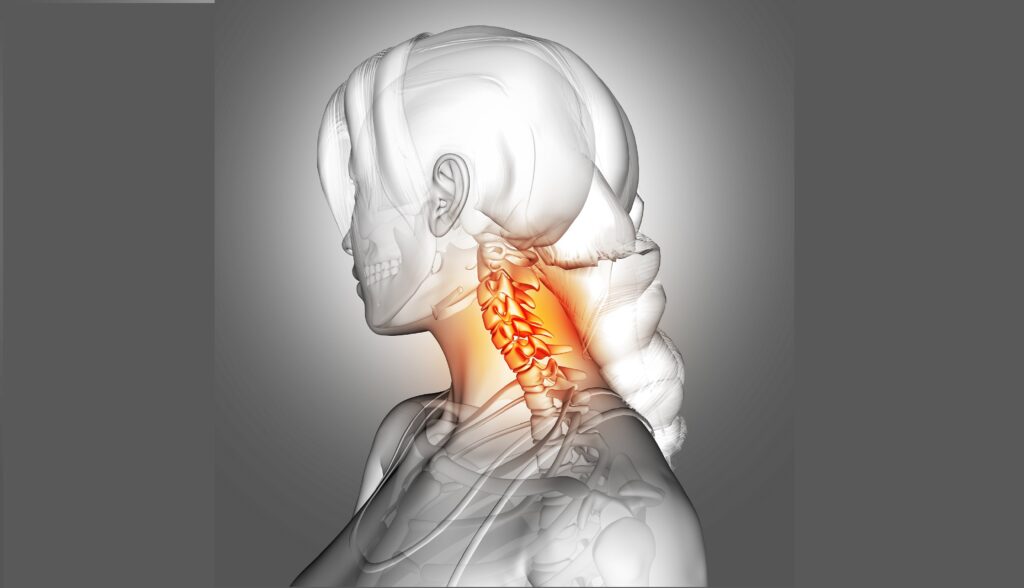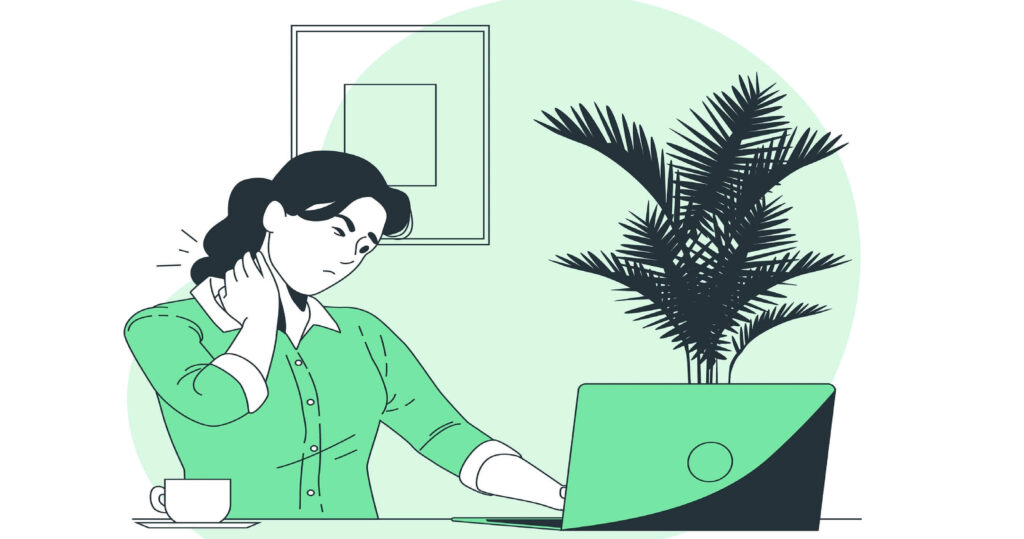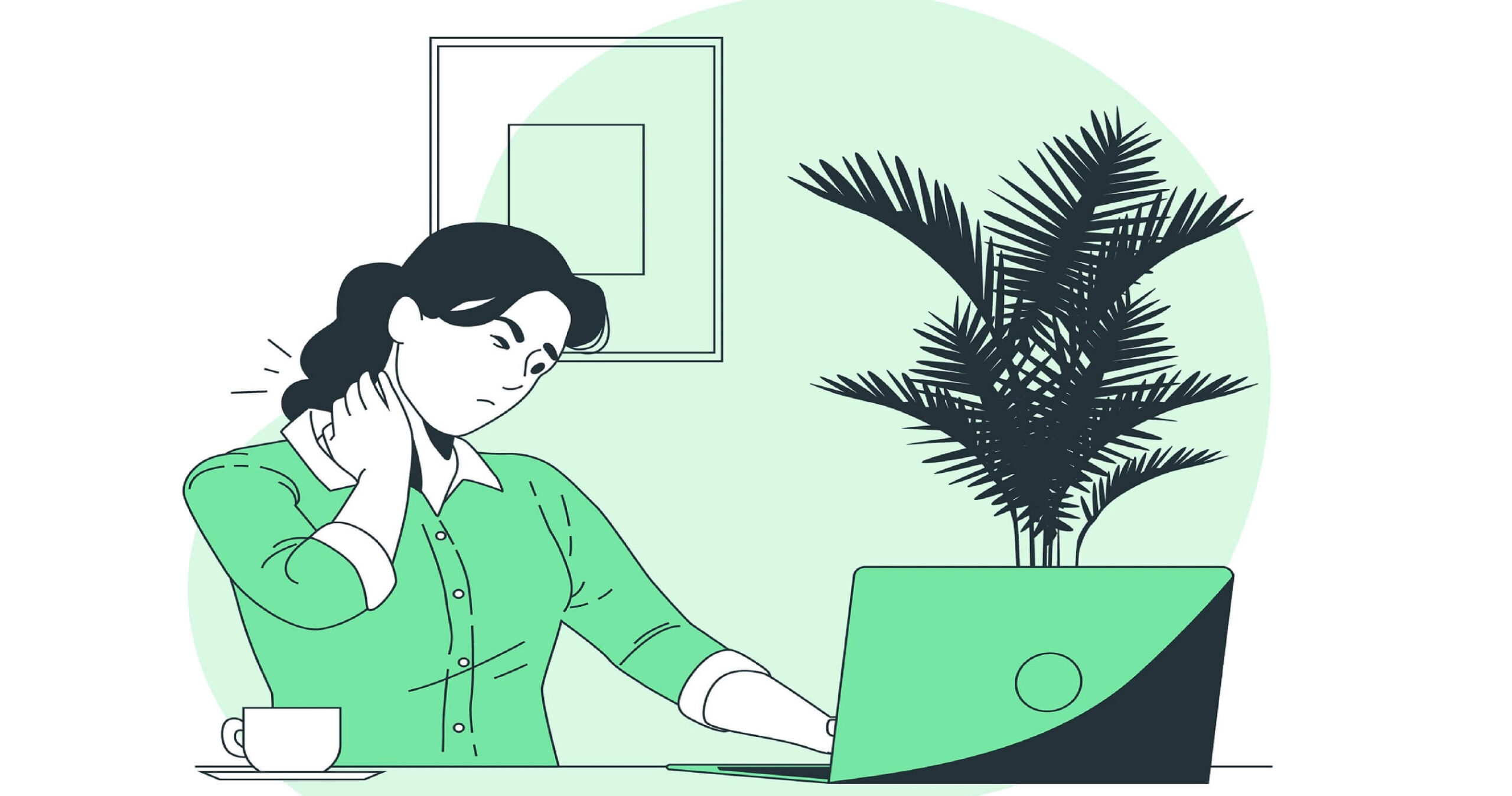Introduction:
Suffering from neck pain is an all-too-common condition that affects people of all ages and backgrounds. Though in many instances self-care measures may help alleviate symptoms, sometimes medical attention must be sought in order to find relief. We will explore when seeking medical advice is necessary here – be it symptom detection or medical consultation based on signs and symptoms indicating when seeking professional help might be beneficial in managing neck pain. In this comprehensive guide we’ll look at these indicators that it may be time for professional advice when managing neck pain is required in this comprehensive guide on this page.
Before seeking medical help for neck pain, it’s essential to first understand its nature. Neck pain may stem from muscle strain, poor posture, injury, degenerative conditions or other underlying health conditions and can manifest as stiffness, soreness, sharp or shooting pain, limited range of motion or headaches; or radiate into shoulders arms and hands.
Common Causes of Neck Pain:
1. Muscle Strain:
Overuse, poor posture or sudden movements can strain the muscles and ligaments in your neck, leading to discomfort and pain.
2. Injury:
Whiplash from car accidents, falls, sports injuries or trauma may lead to neck pain as well as soft tissue damage that needs healing time.
3. Degenerative Conditions:
Osteoarthritis, cervical spondylosis and herniated discs can all contribute to neck pain due to wear-and-tear on the cervical spine.
4. Nerve Compression:
Conditions such as cervical radiculopathy or spinal stenosis can compress nerves in the neck, leading to pain, numbness or weakness in arms and hands.
5. Underlying Health Issues:
Infections, tumors or inflammatory diseases may present with neck pain as one of their symptoms.
6. Poor Posture:
Long periods spent slouching over electronic devices can strain muscles and ligaments in the neck area causing discomfort and stiffness in its muscles and ligaments leading to pain and stiffness in its muscles and ligaments causing pain and stiffness in its muscles and ligaments, ultimately leading to pain and stiffness.
7. Degenerative Disorders:
Osteoarthritis, degenerative disc disease and cervical spondylosis can all play a part in neck pain by wearing down spinal structures over time.
8. Stress and Tension:
Emotional distress and anxiety may manifest physically as tension in neck muscles, leading to discomfort and pain.
Remedies for Neck Pain:
1. Proper Posture:
Adopting an optimal spine alignment when sitting, standing and sleeping can ease strain on neck muscles and support overall spinal health.
2. Stretching and Exercise:
Gentle neck stretches, shoulder rolls, and strengthening exercises can improve flexibility while relieving muscle tension and increasing neck stability.
3. Heat and Cold Therapy:
Utilizing heat packs or taking warm showers can relax tense muscles and increase blood flow to an affected area, while applying cold compresses reduce inflammation and alleviate pain.
4. Ergonomic Adjustments:
Ensuring workstations are ergonomically designed with adjustable chairs, computer monitors at eye level, and keyboard placement can help protect against neck strain caused by long sitting periods.
5. Massage and Manual Therapy:
Massage therapy, chiropractic adjustments and physical therapy sessions provided by professionals can target tight muscles, release tension and increase neck mobility.
6. Pain Medication:
Over-the-counter pain relievers such as ibuprofen or acetaminophen can provide temporary relief of mild to moderate neck pain; however, their use should be limited and under medical guidance in order to avoid dependency or adverse side effects.
7. Stress Management Techniques:
Employing relaxation techniques such as deep breathing, meditation, yoga or tai chi can significantly decrease stress levels and relieve tension-related neck pain.
8. Neck Support Devices:
Utilizing ergonomic pillows, cervical collars or supportive neck braces while sleeping or engaging in physical activities can provide additional support and promote proper neck alignment.
9. Lead a Healthy Lifestyle:
Regular physical activity, nutritional intake, adequate hydration and sufficient rest can all contribute to keeping muscles, ligaments and joints strong and resilient.
10. Mindful Technology Use:
For optimal tech usage, limit screen time, take frequent breaks and maintain proper posture when using electronic devices to avoid neck strain caused by technology use.
11. Injury Prevention:
Use appropriate lifting techniques, wear protective gear during sports or physical activities, and observe proper precautions to protect yourself against accidents and serious injuries.
12. Stress Reduction:
Engage in stress-relieving activities, seek social support and develop coping mechanisms in order to manage emotional stress and prevent tension-related neck pain.
13. Regular Checkups:
Visit healthcare professionals regularly for preventive screenings, spinal assessments and personalized advice to maintain optimal neck health.
Warning Signs and Symptoms:
While most instances of neck pain typically resolve without medical intervention, certain red flags should prompt immediate medical intervention. Some of these indicators include:
1. Constant or Severe Pain:
If neck pain persists beyond a few days despite self-care measures or is severe and debilitating, or requires medical evaluation for resolution, it could indicate an underlying issue that needs further medical evaluation. Neck Stiffness and Limited Range of Motion: Consequently
Assaulting or stiffening of the neck may indicate an underlying medical condition.
2. Radiating Pain:
Neck-related discomfort that radiates to the shoulders, arms, hands, or fingers along with numbness, tingling or weakness could indicate nerve compression or injury.
3. Trauma or Injury:
Neck pain experienced following an incident such as a car accident, fall, or blow to the head should be evaluated by healthcare providers as this could indicate soft tissue damage or spinal trauma.
4. Neurological Symptoms:
Signs such as difficulty walking, coordination issues, loss of bowel or bladder control or changes in sensation or strength in arms and hands should prompt immediate medical care as they could indicate nerve damage or spinal cord compression.
5. Fever and Infection:
Neck pain associated with fever, swollen lymph nodes, difficulty swallowing or other signs of infection could indicate serious meningitis or deep neck infection conditions that need medical treatment immediately.

When to Seek Medical Help:
If any of the warning signs and symptoms listed above arise, it’s essential that medical attention be sought immediately. Certain risk factors may increase the chance that serious underlying causes for neck pain could exist such as:
- A history of cancer or autoimmune diseases
- Recent trauma or injury to neck Its
- Progressive or worsening symptoms
- Age over 50
- Corticosteroids or immunosuppressive drugs as therapy
- If you have had prior spinal surgery or conditions, it’s advisable to visit a healthcare provider such as a primary care physician, orthopedic specialist, neurologist, or spine specialist for a complete assessment and appropriate management plan.
1. Diagnostic Evaluation:
As part of an evaluation for neck pain, healthcare providers usually conduct a thorough assessment which may include:
2. Medical History:
Acquiring details regarding the onset, duration, severity and characteristics of neck pain as well as any relevant medical histories including prior injuries or underlying health conditions is necessary in constructing an accurate picture.
3. Physical Examination:
Examine range of motion, strength, reflexes and sensation in the neck, arms and hands as well as for signs of inflammation, swelling or deformity.
4. Imaging Studies:
Depending on the clinical presentation and suspected underlying cause, diagnostic tests such as X-rays, MRI (magnetic resonance imaging) scans or CT (computed tomography) scans may be conducted in order to examine structures within the cervical spine and identify any abnormalities.
6. Laboratory Tests:
When infections or inflammatory conditions are suspected, blood tests or other laboratory investigations may be conducted to look for markers of inflammation, infection or autoimmune disease.
Treatment and Management:
Effective treatments for neck pain depend on its underlying cause, severity of symptoms and individual patient factors. Conservative measures like rest, ice or heat therapy, over-the-counter pain relievers or physical therapy may provide sufficient relief and promote healing.
However, if there are structural abnormalities or serious conditions identified that require further interventions such as medications: Medication could include muscle relaxants, anti-inflammatory drugs or pain relievers to relieve discomfort and inflammation.
Physical Therapy:
Targeted exercises, manual therapy techniques and postural correction may be recommended to increase neck strength, flexibility and posture while decreasing discomfort.
Corticosteroid injections or nerve blocks may be given to reduce inflammation, reduce pain and restore function in cases of nerve compression or inflammation.
Surgery:
When conservative treatments fail to provide relief or there is evidence of significant structural damage or spinal cord compression, surgery may be considered as a means of treating the problem at its source.
Prevention and Self-Care Strategies:
While certain causes of neck pain cannot be controlled or avoided entirely, adopting healthy lifestyle habits and ergonomic practices may help decrease or avoid their occurrence: Maintain Good Posture:
Make use of ergonomic principles when sitting, standing, and using electronic devices so as to minimise strain on the neck and spine.
1. Exercise regularly:
For maximum benefits, engage in neck strengthening exercises, stretches, and low-impact activities such as swimming or yoga in order to enhance muscle tone, flexibility, and overall neck health. Take Breaks: for additional relaxation take frequent breaks when doing physical activities aimed at strengthening neck muscles.
If you spend long hours sitting or working at a computer, take frequent breaks to stretch, switch positions and relieve muscle tension. Also ensure you use proper pillow support!
Choose a pillow with proper neck alignment while sleeping, and avoid sleeping on your stomach which can strain the neck.
2. Keep Hydrated:
Be sure to drink enough water throughout the day in order to keep spinal discs hydrated and maintain spinal health.
3. Lift Safely:
When lifting heavy objects, make sure that you use proper lifting techniques; bend at your knees while keeping the object close to your body to minimize strain on both neck and back muscles.
Conclusion:
While neck pain is a relatively common complaint that often resolves on its own, certain warning signs and symptoms require medical intervention. Persistent, severe, or worsening neck pain accompanied by neurological symptoms, trauma or other red flags should prompt evaluation by healthcare providers in order to rule out serious causes and provide appropriate management plans.

